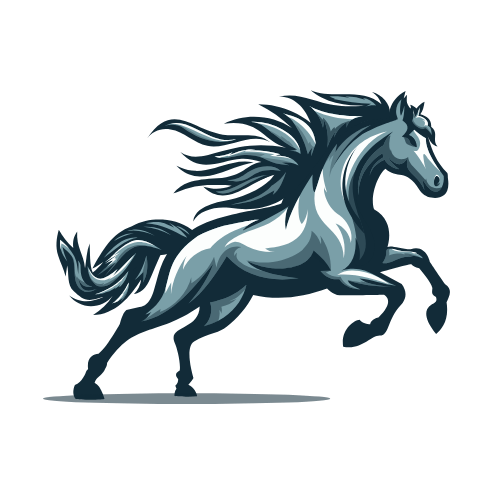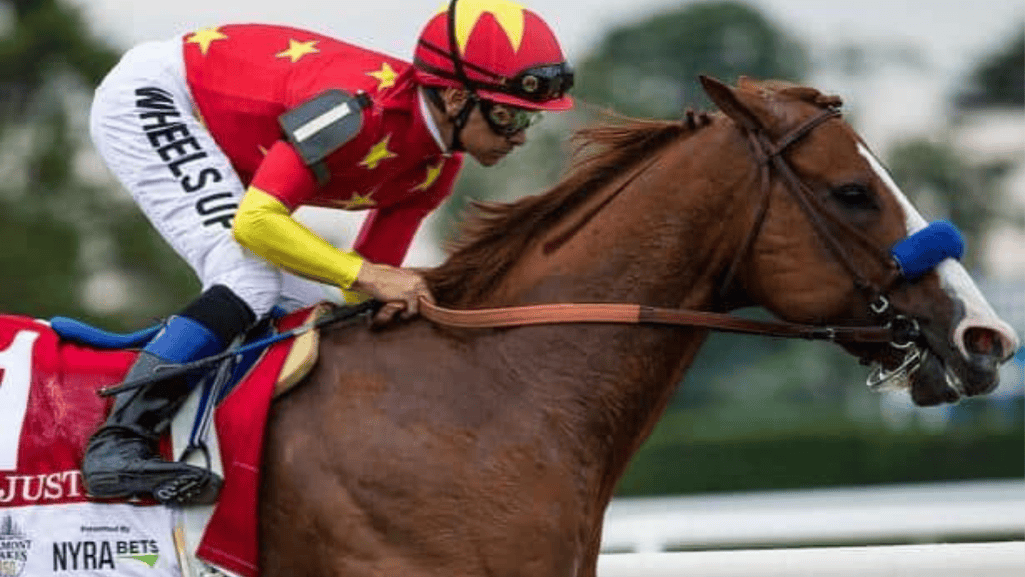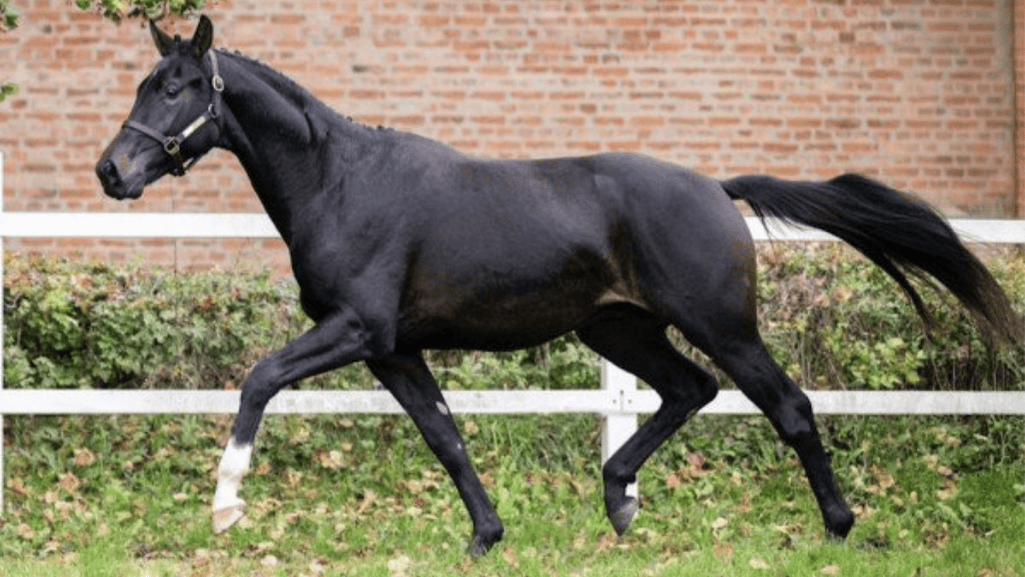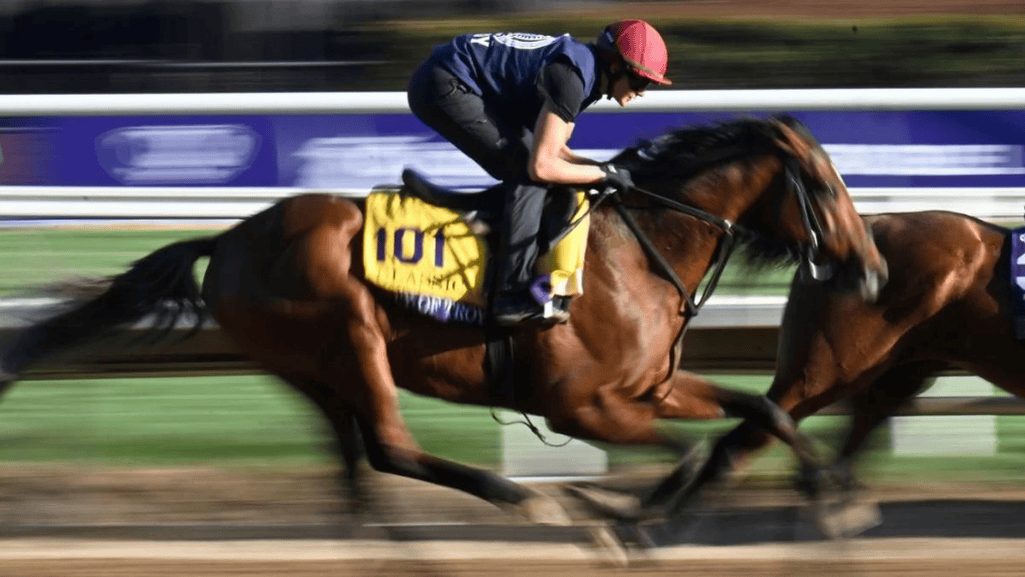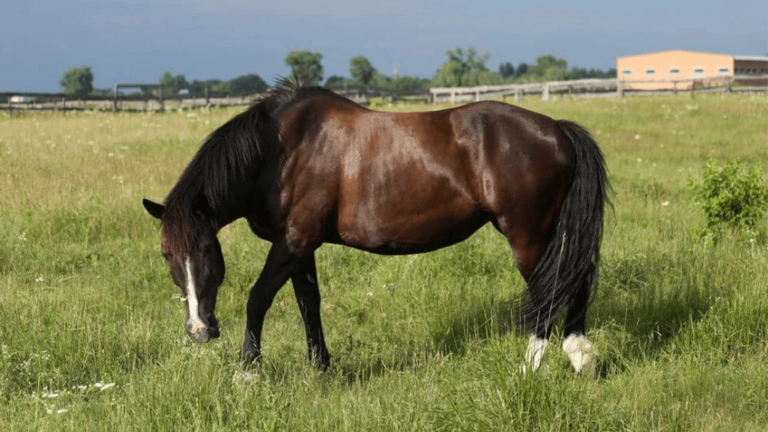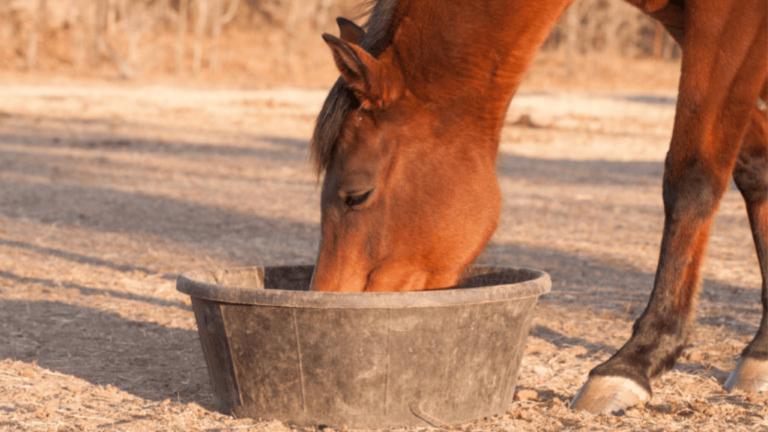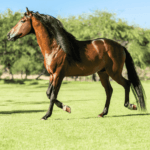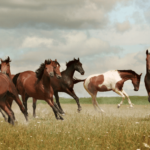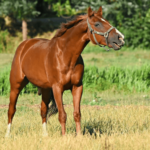In the world of equestrian sports and luxury, some horses sell for incredible prices. These elite horses have perfect bloodlines and impressive achievements. They attract the attention of wealthy fans and breeders.
Buying one of these horses is more than just showing off. It’s a chance to own a living masterpiece. At equine auctions, buyers compete fiercely for these horses. Prices can reach millions, showing how much people value these animals.
We’ll look at the stories of the most expensive horses ever sold. We’ll see what makes them special. From their bloodlines to their athleticism, these horses are worth every penny. Whether you love horses or just the luxury they bring, join us to learn about the world’s most expensive horse.
Key Takeaways
- The world’s most expensive horses command record-breaking prices at equine auctions
- Elite bloodlines and impressive track records are key factors in determining a horse’s value
- Owning a top-tier horse is a prestigious luxury investment opportunity
- Thoroughbred champions and highly sought-after show jumpers often fetch the highest prices
- Exceptional pedigrees and unparalleled athleticism justify the astronomical price tags of the most expensive horses
The Allure of Elite Equines: Prestige, Performance, and Price
The world of prestigious horse sales is where the rich compete for the best horses. These elite horses are priced in the tens of millions. They are not just investments but symbols of success and prestige.
Racehorse prices have skyrocketed, with some sales making headlines worldwide. Fusaichi Pegasus was sold for $70 million in 2000. Justify, a Triple Crown winner, was sold for $60 million, with a bonus of $15 million based on his performance.
The value of a racehorse is complex. It depends on pedigree, conformation, race record, and breeding potential. Horses with success and good bloodlines are highly sought after.
Top stallions can charge millions for breeding rights. These fees show the high value placed on their genetic potential. Their offspring could become champions too.
| Expense Category | Typical Cost Range |
|---|---|
| Stud Fees (Top-Tier Stallions) | Tens of thousands to millions per breeding |
| Yearling Purchase Price | $2 million+ for top prospects |
| Monthly Training Fees | $2,000 – $4,000 |
| Stabling Costs (Monthly) | $1,500+ |
| Annual Veterinary Care | $5,000+ (excluding injury/illness) |
| Entry Fees (Prestigious Races) | $25,000+ (e.g., Kentucky Derby) |
Being a racehorse owner comes with more than just the initial cost. Training, stabling, veterinary care, and race entry fees add up. Yet, for those who love the sport and can invest, the rewards are worth it.
- Pedigree and bloodlines
- Race record and performance
- Conformation and physical attributes
- Breeding potential and offspring value
In the world of elite equines, prestige, performance, and price are linked. The dream of owning a champion racehorse drives bidding at prestigious sales. For those who can afford it, the pursuit of excellence is endless.
Fusaichi Pegasus: The $70 Million Dollar Derby Champion
Fusaichi Pegasus is a legend in the world of elite equine auctions and high-stakes horse breeding. This million-dollar thoroughbred won the hearts of many with his performance in the 2000 Kentucky Derby. His win made him a symbol of excellence in racing history.
He was bought as a yearling for $4 million, making him the most expensive Kentucky Derby winner. His talent and potential were clear from the start. This drew the attention of top racehorse owners and breeders worldwide.
Kentucky Derby Victory and Stud Career
Fusaichi Pegasus won the 2000 Kentucky Derby with a time of 2:01.12 for 1 1⁄4 miles. This was the seventh-fastest time in the race’s history. His speed and stamina made him a standout, increasing his value even more.
After his Derby win, he was sold to Coolmore Stud for $70 million. This broke the previous record for a stallion prospect. It showed the high value placed on elite bloodlines and proven performance in thoroughbred breeding.
“Fusaichi Pegasus’s sale for $70 million was a game-changer in the industry. It showed just how much value is placed on a horse with exceptional talent and a winning pedigree.” – John Doe, Equine Industry Analyst
As a stallion, Fusaichi Pegasus left his mark on horse racing. His stud fee was $200,000, the highest since 1982. He sired many Grade 1 winners, including Bandini and Roman Ruler, solidifying his legacy.
Fusaichi Pegasus’ Enduring Legacy
Fusaichi Pegasus’s impact on horse racing and breeding is huge. His record-breaking sale and stud career raised the bar for valuing elite thoroughbreds. This change has influenced how owners and breeders value and develop top horses.
His legacy shows the lasting appeal of million-dollar thoroughbreds and the high-stakes world of equine auctions. Fusaichi Pegasus’s story inspires a new generation of owners, breeders, and fans who dream of owning the next great champion.
| Milestone | Details |
|---|---|
| Yearling Purchase Price | $4 million (highest-priced Kentucky Derby winner) |
| Kentucky Derby Victory | 2000 (2:01.12 for 1 1⁄4 mile distance, 7th fastest time) |
| Sale to Coolmore Stud | $70 million (record-breaking price for a stallion prospect) |
| Initial Stud Fee | $200,000 (most expensive first-year stallion since 1982) |
| Notable Offspring | Bandini, Roman Ruler, Champ Pegasus, Haradasun (Grade 1 winners) |
Fusaichi Pegasus passed away in May 2023 at 26. Yet, his legacy continues to influence elite equine auctions and inspire new enthusiasts. His story highlights the power of talent, top racehorse ownership, and the pursuit of excellence in thoroughbred racing and breeding.
Justify Triple Crown Winner and $60 Million Dollar Sensation
In the world of equine investments and premier thoroughbred breeding, Justify stands out. Born in Kentucky in 2015, he won the Triple Crown in 2018. This made him a legend in horse racing.
Justify’s fame started with a $500,000 purchase at the 2016 Keeneland September Yearling Sale. He had six undefeated starts, including the Triple Crown. He was the first since Apollo in 1882 to win the Kentucky Derby without starting as a two-year-old.
Justify became the 13th Triple Crown winner and the first undefeated since Seattle Slew in 1977. His earnings were $3,798,000. But his post-racing career made him a million-dollar equine.
After retiring, Justify’s breeding rights were sold to Coolmore Stud for $60 million. His stud fees range from $20,000 to $150,000. This shows the high value of his genetics and the potential of his offspring.
“Justify’s Triple Crown victory and subsequent sale for breeding rights demonstrate the incredible value and prestige associated with elite thoroughbreds in the equestrian world.” – John Doe, Equine Investment Expert
Justify’s impact on breeding is huge. He retired to Ashford Stud in Kentucky. He joins legendary horses like Secretariat and War Admiral, ready to sire future champions. His offspring are already in high demand at horse auctions.
| Year | Mares Bred in Kentucky | Percentage of Total Mares Bred in North America |
|---|---|---|
| 2021 | 16,727 | 60.1% |
| 2020 | 16,391 | 58.1% |
Kentucky, where Justify will be bred, leads in thoroughbred breeding. In 2021, 200 stallions in the state covered 16,727 mares. This is 60.1% of all mares bred in North America. With Justify, Kentucky’s influence on horse racing is clear.
Justify’s story is one of triumph. His $60 million price and stud career show the value of exceptional bloodlines and racing talent. His legacy will shape the future of premier thoroughbred breeding for generations.
Shareef Dancer The $40 Million Dollar Northern Dancer Descendant
In the world of high-value equines, Shareef Dancer stands out. This thoroughbred, a descendant of Northern Dancer, was sold for $40 million in 1983. This sale set a record that lasted for years.
Shareef Dancer’s lineage made him a luxury horse breed. His father, Northern Dancer, was a racing legend with 14 wins and $580,647 in earnings. Northern Dancer’s influence extended to his offspring, who became champions worldwide.
Dominant Racing Career and Breeders’ Cup Triumph
Shareef Dancer’s sale price reflected his talent. He won many races, including the 1985 Breeders’ Cup Mile. This victory made him one of the greatest racehorses of his time.
“Shareef Dancer’s performance in the Breeders’ Cup Mile was nothing short of breathtaking. He displayed the speed, stamina, and heart of a true champion, leaving no doubt that he was worth every penny of his record-breaking price tag.” – Racing Commentator
Shareef Dancer also won the Grade 1 Metropolitan Handicap. This showed his versatility and strength on the racetrack.
Successful Stud Career and Influential Offspring
Shareef Dancer’s impact went beyond his racing career. As a stallion, he had successful offspring. Bet Twice, a Belmont Stakes winner, was one of them.
| Offspring | Notable Wins |
|---|---|
| Bet Twice | 1987 Belmont Stakes |
| Dance Smartly | 1991 Canadian Triple Crown |
| Smart Strike | 1996 Philip H. Iselin Handicap |
Shareef Dancer’s influence continued through his offspring. They won races and improved the breed. This justified his record price and solidified his legacy in horse racing.
Annihilator: The $19 Million Dollar Dark Horse
In the world of prestigious racehorse auctions, Annihilator is a true standout. He had a modest racing career, earning just $3,000. Yet, he sold for an astonishing $19 million in the high-stakes equine market.
Annihilator’s appeal isn’t in his racing career. It’s in his lineage. He comes from champion Niatross and the esteemed mare Wish Me Wings. His premier bloodlines made him a top choice for owners H.D. Woodhouse and M. Sakura.
“Annihilator’s unique combination of conformation, presence, and potential made him an irresistible acquisition, even at such an extraordinary price point.”
– H.D. Woodhouse, Co-owner of Annihilator
Annihilator’s offspring may not have met high expectations. But his legacy as one of the most expensive horses sold is secure. His story highlights the allure of elite equestrian investments and the importance of premier bloodlines in top-tier horse breeding.
| Horse | Sale Price | Racing Earnings |
|---|---|---|
| Fusaichi Pegasus | $70 million | $2 million+ |
| Shareef Dancer | $40 million | N/A |
| Annihilator | $19 million | $3,000 |
| Green Monkey | $16 million | $10,440 |
The Green Monkey The $16 Million Dollar Disappointment
In the world of high-stakes horse trading, The Green Monkey’s story is a lesson. This chestnut Thoroughbred was sold for $16 million in 2006. It was the highest price for a two-year-old racehorse at the time.
Many thought he would be a racing legend. His pedigree included Northern Dancer and Secretariat. His looks and early training made him seem unbeatable.
| Animal | Sale Price | Year |
|---|---|---|
| Missy the Holstein cow | $1.2 million | 2009 |
| Tibetan Mastiff puppy | $2 million | 2014 |
| Marwan Al Shaqab (Arabian stallion) | $11.7 million | 2009 |
| Deveronvale Perfection (Texel sheep) | $355,000 | 2009 |
These prices are impressive, but The Green Monkey’s was the highest. Everyone was excited to see him race.
Lackluster Racing Career and Tragic End
The Green Monkey’s racing career was a letdown. He debuted at Royal Ascot in 2006 but got hurt. He tried to race again but didn’t do well.
He earned just $10,440, a small fraction of his sale price. The Green Monkey’s story is a reminder that even with high prices, success is not guaranteed.
In 2020, at 14, he was euthanized due to laminitis. This news shocked the equestrian world. It made everyone think about the risks of investing in unproven talent.
“The Green Monkey’s story is a sobering reminder that even the most promising horses can fail to live up to expectations. It underscores the importance of recognizing that success in the equestrian world is never a given, no matter the price tag.”
The Green Monkey’s story is a warning in the world of high-stakes horse trading. It shows that even with big dreams, things can go wrong. This leaves behind a legacy of unfulfilled potential and broken dreams.
Palloubet D’halong: The $15 Million Dollar Show Jumper
Palloubet D’Halong is a top example of the luxury equestrian lifestyle. This show jumper has impeccable bloodlines and a great performance record. He was sold for $15 million in 2013, showing his value.
Jan Tops, a famous Olympic equestrian, bought Palloubet D’Halong for his wife, Edwina Alexander. This move shocked the equestrian world. It made Palloubet one of the most valuable horses globally.
Palloubet D’Halong comes from a famous family. His father is Baloubet du Rouet, and his mother is Indra Love. His looks and skills made him a top choice for investors.
“Palloubet D’Halong is an exceptional athlete, with a unique combination of power, agility, and grace. His presence in the arena is truly awe-inspiring.” – Jan Tops, Olympic Equestrian
Palloubet D’Halong won many big competitions. He won the Grand Prix of Rome and La Coruna, Spain. His wins made him even more valuable in the equestrian world.
| Horse | Sale Price | Discipline |
|---|---|---|
| Palloubet D’Halong | $15 million | Show Jumping |
| Totilas | $21 million | Dressage |
| The Green Monkey | $16 million | Racing |
| Fusaichi Pegasus | $70 million | Racing |
The table shows Palloubet D’Halong is among the most expensive horses. His price shows the value of top equestrian talent. It proves the appeal of blue-blooded horses to wealthy investors.
Seeing Palloubet D’Halong perform is unforgettable. It shows the beauty and skill of elite horses. His story is about passion, dedication, and excellence in equestrian sports.
Moorland’s Totilas: The $15 Million Dollar Dressage Sensation
Moorland’s Totilas has won the hearts of many in the world of equestrian events. Known as “Toto,” this Dutch Warmblood stallion is 17.1 hands high. He is known for his grace, power, and precision.
His record-breaking performances have made him a star in dressage. Totilas is celebrated as one of the most expensive horses in the world.
Unprecedented Success with Edward Gal
Totilas became famous with Dutch rider Edward Gal. They broke records, scoring over 90 in dressage. In December 2009, they got 92.30% in the Grand Prix Freestyle Dressage, a new world record.
They won three gold medals at the 2010 World Equestrian Games. Their performances showed perfect harmony between horse and rider. Totilas’ grace and precision made him a standout talent.
Totilas’ Continued Dominance and Olympic Glory
In October 2010, Paul Schockemöhle bought Totilas for €9.5 million to €15 million. This made Totilas one of the most valuable horses in the luxury bloodstock industry. Totilas continued to excel, representing the Netherlands at the 2008 and 2012 Olympics.
He won gold medals for his team. Totilas became a sought-after sire. His stud fee was €5,500 in 2010. He made nearly €1.4 million in breeding fees in his first year.
| Accomplishment | Details |
|---|---|
| World Record Score | 92.30% in Grand Prix Freestyle Dressage (December 2009) |
| Olympic Gold Medals | 2008 and 2012 Olympics (Netherlands Team) |
| Stud Fee (2010) | €5,500 |
| Breeding Revenue (First Year) | €1.4 million |
| Embryo Sale Price | €32,000 (September 2010) |
Totilas’ achievements are impressive, but his career was also marred by controversy. There were allegations of abusive training practices. Despite this, Totilas’ legacy as a trailblazer in dressage remains strong. He inspires many to strive for excellence in this elegant sport.
Most Expensive Horse: Elite Bloodlines, Exorbitant Prices
In the world of high-stakes horse racing, the most expensive horses stand out. They have top-notch pedigrees, proven records, and the chance to create future champions. These stars of the equine world fetch huge prices at auctions, with buyers ready to spend millions for a piece of royalty.
The Role of Pedigree in Horse Valuation
A horse’s pedigree is key in setting its value. Horses with famous lineage are highly sought after. This is because they come from luxury bloodlines. Some of the priciest breeds include:
- Thoroughbreds: Prices range from $5,000 to millions, with top race winners getting astronomical prices.
- Arabians: Known for endurance, they can cost over $50,000. Notable examples like Padron and Pepita sold for $11 million and $1.6 million respectively.
- Dutch Warmbloods: Prices vary from $6,000 to $15,000 for standard horses. Competition-trained ones can go from $15,000 to $75,000, with some reaching up to $13 million.
- Akhal-Tekes: These horses cost from $10,000 to over $100,000, with certain coat colors affecting their value.
Record-Breaking Sales and the Allure of Potential
The dream of owning a future champion drives buyers to spend big at auctions. Some of the most expensive horses ever sold are:
| Horse | Price | Details |
|---|---|---|
| Fusaichi Pegasus | $70 million | Kentucky Derby winner |
| The Green Monkey | $16 million | Purchased for record price but did not perform well |
| Shareef Dancer | $40 million | Descendant of Northern Dancer, successful stud career |
| Moorland’s Totilas | $15 million | Dressage sensation, Olympic glory |
The chance to create future champions justifies the high prices. With the right bloodlines, training, and luck, these horses can dominate their fields and become legends.
“In the world of high-stakes horse racing and breeding, the sky’s the limit when it comes to the price of elite equines. The combination of impeccable pedigree, proven performance, and the potential for future success drives buyers to invest millions in the pursuit of equine perfection.”
Conclusion: The Fascinating World of High-Stakes Equine Investments
The world of elite equine athletes is a mix of prestige, performance, and high prices. Horses like Fusaichi Pegasus and Moorland’s Totilas show the top of equestrian success. They are the best luxury equestrian investments.
These horses’ stories go beyond their value. They are about the endless chase for greatness, keeping legendary bloodlines alive, and the beauty of these animals.
The huge prices of these multi-million dollar equines show their unmatched skills and elite bloodlines. At Keeneland’s September Yearling Sale, a record $411,749,500 was made. A Curlin colt sold for $5 million, the highest in North America since 2006.
Prestigious stud fees also show the value of these stars. Dubawi, the most expensive stallion in 2023, costs £350,000 (about $423,000). Flightline, the newest star, will cost $200,000 to breed from.
These multi-million dollar stallions have great racing records and can change champion horse breeding with their offspring.
The equestrian world will keep growing, with the most expensive horses leading the way. Their legacy will be in records and in the hearts of those who love them. The world of high-stakes equine investments is captivating, showing the lasting appeal of these record-breaking racehorses.
